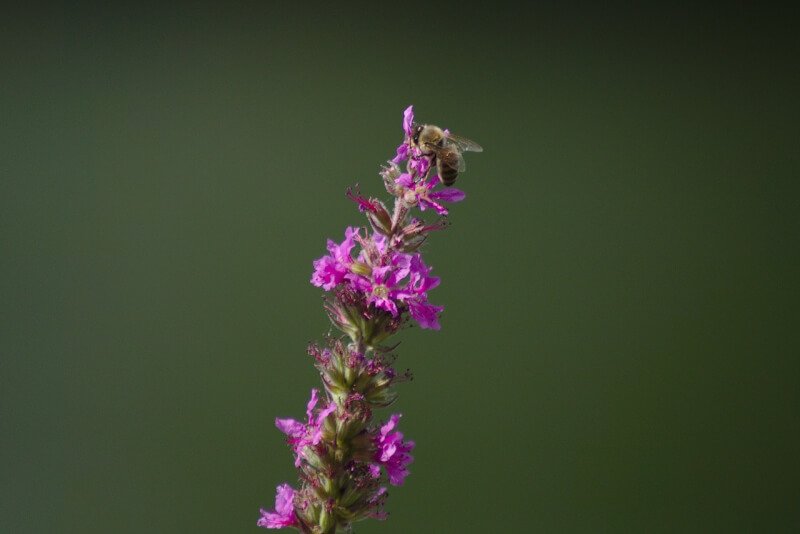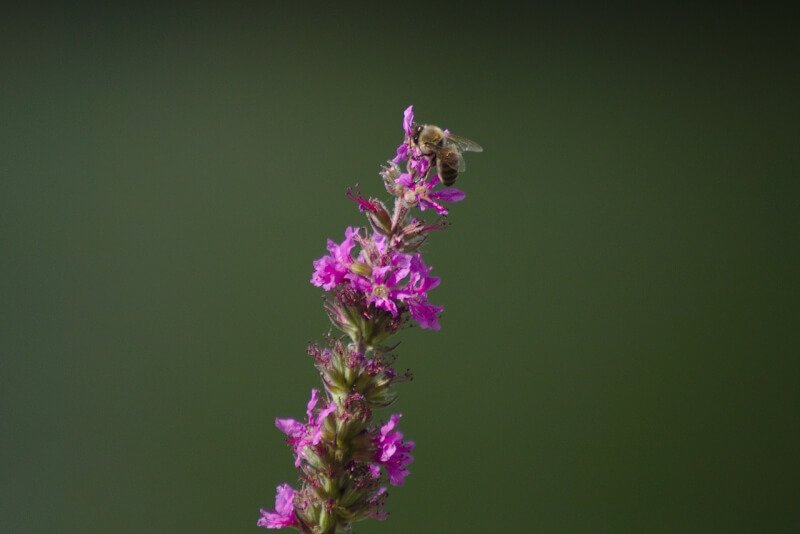Are you looking to create a vibrant and thriving urban garden teeming with life? If so, listen up! We have some fantastic tips to help you attract delightful pollinators to your little slice of nature in the city. Whether you have a small balcony garden or a spacious backyard oasis, these simple strategies will have butterflies, bees, and hummingbirds flocking to your urban haven in no time. Don’t miss out on the opportunity to witness the graceful dance of these vital creatures as they pollinate your flowers and contribute to the beauty and health of your garden. So grab your gardening gloves, roll up your sleeves, and let’s get started on transforming your garden into a pollinator paradise!
Choosing the Right Plants

Opt for Native Plants
When it comes to attracting pollinators to your urban garden, one of the first steps you can take is to choose native plants. Native plants have co-evolved with local pollinators and are well-suited to their needs. They provide a familiar and abundant source of food for pollinators, making them more likely to visit and spend time in your garden. Additionally, native plants are generally more resilient and require less maintenance, making them an excellent choice for urban gardeners.
Include a Variety of Flowers and Herbs
To create a diverse and attractive habitat for pollinators, it’s important to include a variety of flowers and herbs in your garden. Different pollinators have different preferences when it comes to the shape, color, and scent of flowers. By offering a wide range of choices, you’ll be able to attract a greater variety of pollinators. Consider planting flowers with different bloom times to ensure a consistent food source throughout the growing season.
Consider Planting Trees and Shrubs
In addition to flowers and herbs, don’t forget to include trees and shrubs in your garden. These larger plants provide valuable shelter and nesting spots for pollinators. They also offer additional food sources in the form of nectar and pollen. Native trees and shrubs, such as dogwoods, willows, and viburnums, are particularly attractive to a variety of pollinators. By incorporating these larger plants into your garden, you’ll create a more inviting environment for pollinators of all kinds.
Creating an Inviting Environment
Provide Shelter and Nesting Spots
Pollinators need more than just food sources to thrive in your garden. They also require shelter and nesting spots to rest, hide from predators, and raise their young. You can provide shelter by planting dense shrubs or creating brush piles. Nesting spots, such as bee hotels or butterfly houses, can also be added to your garden to attract specific types of pollinators. By creating a welcoming environment with plenty of hiding places, you’ll increase the likelihood of pollinators choosing to make your garden their home.
Include Water Sources
Just like any other living creature, pollinators need access to water. Providing a reliable water source in your garden is essential for attracting and keeping pollinators around. You can create a simple water source by placing a shallow dish or basin filled with water in your garden. Adding stones or pebbles to the dish will give pollinators a place to land and access the water safely. It’s important to keep the water source clean and filled with fresh water to ensure its appeal to pollinators.
Avoid Using Pesticides and Herbicides
To create a truly inviting environment for pollinators, it’s important to avoid using pesticides and herbicides in your garden. These chemicals can be harmful not only to pollinators but also to other beneficial insects and wildlife. Instead, opt for natural pest control methods, such as companion planting or manual removal of pests. By reducing or eliminating the use of chemicals, you’ll create a safer and healthier environment for pollinators to thrive.
Knowing the Pollinators
Identify the Most Common Pollinators
To effectively attract and cater to pollinators in your garden, it’s essential to know which ones are most common in your area. Different regions may have different dominant pollinator species, so it’s important to do your research and identify the species most likely to visit your garden. Common pollinators include bees, butterflies, moths, hummingbirds, and even small mammals like bats. By familiarizing yourself with the pollinators in your area, you can better understand their preferences and behaviors.
Research Their Preferences and Needs
Once you’ve identified the pollinators in your area, take the time to research their specific preferences and needs. Each pollinator has unique requirements when it comes to food sources, nesting habitats, and even the types of flowers they prefer. For example, bees are attracted to blue, purple, and yellow flowers, while butterflies are more drawn to bright colors like red, orange, and pink. By understanding the specific needs of the pollinators you want to attract, you can tailor your garden to meet their requirements.
Using Color and Fragrance
Use Vibrant Colors to Attract Pollinators
One effective way to attract pollinators to your garden is to use vibrant colors in your plant selection. Brightly colored flowers, such as red, orange, yellow, and purple, are particularly attractive to many pollinators. These colors signal to pollinators that nectar and pollen are available, drawing them in for a closer look. Consider incorporating a mix of brightly colored flowers throughout your garden to create an eye-catching display and increase its appeal to pollinators.
Opt for Flowers with Strong Fragrances
In addition to using vibrant colors, including flowers with strong fragrances can also help attract pollinators to your garden. Many pollinators, such as bees and butterflies, rely on their sense of smell to locate nectar-rich flowers. By choosing flowers with strong fragrances, you’ll make it easier for pollinators to find and visit your garden. Some examples of flowers with strong fragrances include lavender, jasmine, and sweet peas. Plant these fragrant flowers strategically throughout your garden to create an inviting scent that will attract pollinators from afar.
Appropriate Plant Placement
Group Plants Together
When planning your garden layout, consider grouping plants together to create attractive and beneficial habitats for pollinators. By grouping similar plants, you’ll create a concentrated food source, making it easier for pollinators to find and access nectar and pollen. This also allows pollinators to move more efficiently between flowers, increasing the chances of successful pollination. Grouping plants with similar bloom times can also create striking floral displays and attract a wider variety of pollinators.
Create a Variety of Heights
In addition to grouping plants together, it’s important to create a variety of heights in your garden. This provides different levels of shelter and foraging opportunities for pollinators. Tall plants, such as sunflowers or hollyhocks, can serve as attractive focal points and provide vertical structure. Medium-height plants, such as coneflowers or salvias, can fill in the middle layer and provide ample food sources. Low-growing plants, like creeping thyme or sedums, can be used to cover the ground and attract pollinators that prefer foraging close to the soil. By including plants of varying heights, you’ll create a more visually appealing and inclusive habitat for pollinators.
Maintenance and Care
Provide Consistent Watering
To ensure the health and vitality of your garden, it’s important to provide consistent watering. Adequate moisture is essential for the survival of both plants and pollinators. Water your garden regularly, especially during dry periods, to keep the soil moist and provide a reliable water source for pollinators. Consider using drip irrigation or soaker hoses to minimize water waste and ensure that water reaches the plant roots effectively.
Regularly Remove Weeds and Dead Plants
Regular maintenance, such as removing weeds and dead plants, is crucial for creating a healthy and inviting environment for pollinators. Weeds compete with your garden plants for resources and can disrupt their growth. Dead plants can attract pests and diseases, posing a risk to both your garden and the pollinators that visit it. Take the time to regularly remove weeds and dead plants to keep your garden clean and provide a clear space for pollinators to thrive.
Plan for Year-Round Blooms
To support pollinators throughout the year, it’s important to plan for year-round blooms in your garden. By incorporating a mix of plant species that bloom at different times, you can ensure a steady and reliable food source for pollinators. For example, early spring flowers like crocuses and snowdrops can provide much-needed nectar and pollen when other sources are scarce. Late-season bloomers like asters and goldenrods can offer sustenance well into the fall. By carefully selecting and arranging plants, you can create a garden that provides for pollinators year-round.
Add Attractive Features to Your Garden
Include Bird Feeders and Baths
In addition to pollinators, you can attract other wildlife, such as birds, to your garden by including bird feeders and baths. Birds are natural pollinators themselves and can contribute to the overall health and biodiversity of your garden. By providing a reliable food source and water supply, you’ll encourage birds to visit and potentially nest in your garden. Be sure to choose bird feeders and baths that are appropriate for the species in your area and regularly clean and replenish them to keep them inviting.
Place Decorative Garden Ornaments
To add a touch of charm and visual interest to your garden, consider placing decorative garden ornaments strategically throughout the space. These ornaments, such as wind chimes, birdhouses, or sculptures, can create focal points and draw the attention of both pollinators and humans. When selecting garden ornaments, opt for those made from natural materials, as they blend seamlessly with the surrounding environment. The addition of these decorative elements will not only enhance the beauty of your garden but also provide additional points of interest for pollinators.
Educate Your Community
Host Workshops and Events
One of the most impactful ways you can contribute to pollinator conservation is by educating your community. Consider hosting workshops and events in your garden to share your knowledge and experiences with others. These can include topics such as gardening for pollinators, constructing bee hotels, or identifying common pollinators in your area. By sharing your passion for pollinators and providing practical tips, you can inspire others to join in the effort to create pollinator-friendly urban environments.
Share Information Online and on Social Media
In addition to in-person events, you can also share information about attracting pollinators online and on social media. Create a blog or website where you can post articles, photos, and resources related to pollinator conservation. Utilize social media platforms like Facebook, Instagram, and Twitter to share updates and engage with a larger audience. By harnessing the power of the internet, you can reach people beyond your immediate community and inspire them to take action in their own gardens.
Document Your Progress
Keep a Garden Journal
Documenting your progress and observations in a garden journal can be both educational and rewarding. Use the journal to track the growth and blooming periods of your plants, as well as any unique pollinator sightings. Record the different species of pollinators you observe and any behaviors or preferences you notice. Over time, your garden journal will become a valuable resource, helping you refine your gardening techniques and attract even more pollinators to your urban oasis.
Take Photos of Pollinators in Your Garden
An excellent way to capture the beauty and diversity of pollinators in your garden is through photography. Take photos of the pollinators you encounter, focusing on their unique characteristics and interactions with plants. These photos can serve as a visual record of the success of your efforts to attract pollinators and can also be shared online or in your garden journal. By documenting these special moments, you’ll create a lasting memory of the impact your garden has on pollinators.
Collaborate with Local Organizations
Join Pollinator Conservation Programs
To amplify your impact and connect with like-minded individuals, consider joining pollinator conservation programs or organizations in your area. These groups often have established networks and resources that can support your efforts to create pollinator-friendly gardens. They may offer guidance, educational materials, and even volunteer opportunities to help you further enhance your knowledge and skills. By collaborating with these organizations, you’ll contribute to a broader conservation movement and make a significant difference in your community.
Partner with Nearby Gardens or Beekeepers
Reach out to nearby gardens or local beekeepers to form partnerships and collaborations. By working together, you can exchange knowledge, resources, and even plant materials. For example, you could organize joint garden tours or share surplus plant cuttings or seeds. Beekeepers may also be interested in placing their hives in your garden, providing a valuable opportunity for both parties. By establishing these partnerships, you’ll create a supportive community that can collectively increase the impact of pollinator conservation in your urban area.
In conclusion, attracting pollinators to your urban garden requires careful consideration and planning. By choosing the right plants, creating an inviting environment, understanding the needs of pollinators, using color and fragrance strategically, placing plants appropriately, providing maintenance and care, adding attractive features, educating your community, documenting your progress, and collaborating with local organizations, you can create a thriving pollinator habitat in the heart of the city. Not only will you enjoy a visually stunning garden, but you will also play a vital role in sustaining the delicate balance of nature and ensuring the survival of these invaluable creatures. Happy gardening!


